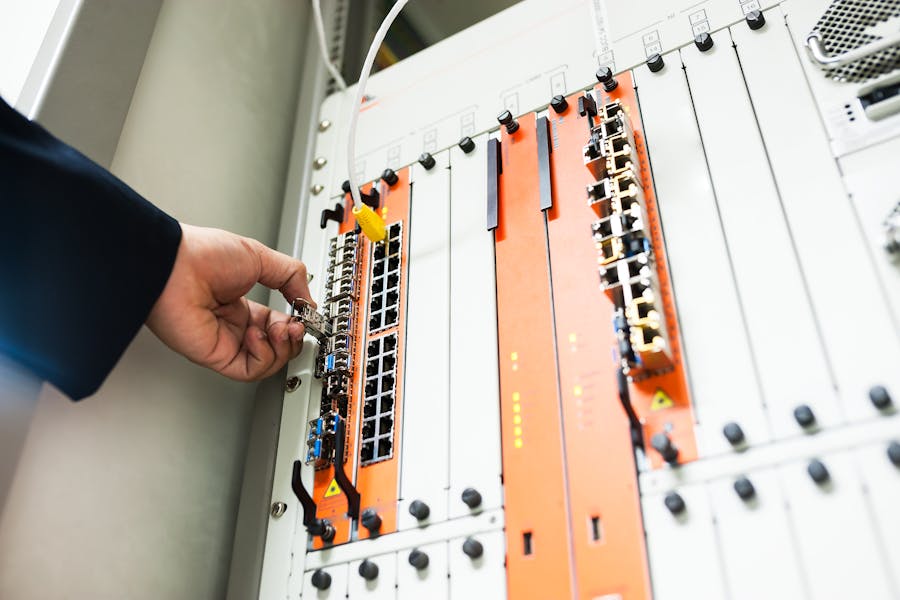
In the complex yet structured world of networking, the concept of IP addressing plays a foundational role in enabling devices to communicate across digital landscapes. Subnetting, which divides larger networks into smaller and more manageable segments, is a critical component of this infrastructure. Among the different subnetting notations used in IP networking, one of the most specific is the /32 subnet. The question that often arises is, how many IP addresses in a /32 subnet?
To understand this, we must first grasp the structure of IPv4 addresses. An IPv4 address consists of 32 bits, typically expressed in four decimal-separated octets (e.g., 192.168.1.1). When a /32 subnet is used, it means that all 32 bits are assigned to the network portion, leaving no bits for host addresses. This results in a subnet that identifies only one unique IP address. There is no room for multiple devices; the entire subnet is dedicated to a single endpoint.
The Concept Behind /32 Subnetting Explained
When dealing with the concept of IP addressing, it’s essential to understand the relationship between subnet masks and address allocation. The /32 subnet mask is one of the most restrictive configurations possible in IP networking. With 32 bits designated to the network part of the address, there are zero bits left for host identification. In practical terms, this means that the subnet includes only one IP address, which is both the network and broadcast address at the same time, although neither is technically required because there’s only one device involved.
This singular IP address can be assigned to a specific device, making it an ideal choice in circumstances where precise traffic targeting is necessary. In routing protocols, /32 addresses are often used to define loopback addresses, which serve as virtual interfaces that cannot go down unless the entire device fails. This makes them crucial for maintaining reliable control plane connectivity in router configurations.
Moreover, firewall administrators frequently use /32 subnets to enforce access control on a per-device basis. This ensures that security policies can be tailored to individual endpoints rather than broad ranges, significantly reducing the surface area for attacks. When configuring access for third-party services or users, it’s common to whitelist only one IP address using the /32 subnet notation.
So, when you ask, how many IP addresses in a /32, you are also asking about how best to implement targeted, secure, and efficient networking practices. With only one IP per /32, it gives you total control.
Benefits of Using a /32 Subnet in Modern Networking Systems
Why use a /32 subnet in networking? This highly specific subnet mask is essential for scenarios that demand precise control, enhanced security, and optimized routing.
Enhanced Security with Host-Specific Rules
Security is a top priority in today’s network architecture, and granular control is vital to maintaining it. A /32 subnet allows administrators to create access control lists (ACLs) and firewall rules that apply to one device only. This drastically reduces the risk of unauthorized access by limiting the scope of each rule.
Simplified Routing Tables
Using a /32 subnet helps streamline routing tables. When routes are defined for a single IP address, it eliminates the possibility of overlapping routes or unintended traffic forwarding. This clarity helps prevent routing loops and misconfigurations in complex environments such as enterprise WANs and backbone infrastructures.
VPN and Tunnel Configurations
A prime example of /32 subnet usage is in VPNs. During the configuration of site-to-site or client-to-site VPNs, each participant often gets a /32 address. This ensures that the data packets are routed precisely to the correct destination, enabling secure and efficient tunneling.
Cloud and Virtual Machines
In cloud services like AWS EC2, Google Cloud Compute Engine, and Microsoft Azure, public and private /32 IP addresses are commonly assigned to virtual machines. These IPs ensure that each instance is uniquely identifiable and can be individually managed without affecting other tenants.
IP Address Conservation
Despite its apparent inefficiency in terms of usable IPs, the /32 subnet has a role in IP conservation. In environments like IoT, where devices require minimal networking features, assigning a /32 address prevents waste and avoids unnecessary overhead. It also simplifies logs and monitoring tools that rely on endpoint identification.
Comparison of IP Addresses in a /32 and Other Subnet Sizes
A /32 subnet represents a single IP address, offering the most granular level of network designation. Unlike broader subnets that assign multiple addresses for devices, gateways, and broadcasts, a /32 targets one unique host, often used for pinpointing individual systems in networking scenarios.
- Compared to other subnet sizes:
-
- /32 – 1 IP address; ideal for identifying a single host.
- /31 – 2 IPs; typically used in point-to-point WAN links.
- /30 – 4 IPs (2 usable); good for small peer-to-peer router links.
- /29 – 8 IPs (6 usable); suits small office or branch setups.
- /24 – 256 IPs (254 usable); common for corporate LANs.
- /16 – 65,536 IPs; large-scale deployment like data centers or ISPs.
- Key benefits of using a /32 subnet include:
-
- Enhanced control over a single IP.
- Precise security rules and filtering.
- No broadcast traffic.
- Easier to audit firewall rules.
- Common uses for /32 include:
- Assigning IPs to cloud VMs.
- VPN configurations.
- Firewall whitelisting.
- BGP routing scenarios.
Real-World Use Cases of /32 Subnets
The value of understanding how many IP addresses in a /32 becomes even clearer when we explore its real-world use. Consider enterprise-level firewalls, which often need rules to manage network access for individual users or systems. Instead of defining a wide range of IP addresses that could inadvertently include unauthorized devices, administrators use /32 subnets to limit access to just one known IP.
For example, a company may allow SSH access to a server only from an employee’s static IP at home. To configure this securely, the IT team uses a /32 subnet mask (e.g., 203.0.113.45/32), which ensures that only that exact IP is granted access.
In cloud computing, assigning /32 addresses is standard practice. It simplifies billing, logging, auditing, and performance analysis. When every VM or container has its IP address, operations teams can trace actions back to the exact resources. Cloud-native applications benefit from this clarity, especially when scaling dynamically across hundreds or thousands of endpoints.
BGP routing, the backbone of internet communication, often involves advertising specific IP prefixes. In customer-facing services, an ISP might announce a /32 prefix to prioritize or route traffic based on the location of the user or content delivery network.
SEO Benefits of Understanding IP Subnetting Focus on /32
How many IP addresses in a /32 subnet exist offers powerful SEO and technical benefits for networking, especially in security and cloud configurations.
How Many IP Addresses in a /32 Affects Firewall Configurations
Knowing how many IP addresses in a /32 subnet exist enables security professionals to set up more effective firewall configurations. Since each rule can target a single device, it prevents excessive permissions and improves the audit trail.
How Many IP Addresses in a /32 Simplifies Tunneling and VPN Setup
Using /32 in tunnel interfaces ensures end-to-end communication with no risk of routing confusion. It streamlines setup and bolsters security by ensuring traffic only reaches the intended endpoint.
How Many IP Addresses in a /32 Helps Optimize Routing Tables
By targeting just one IP, routing tables stay lean and manageable. This results in lower latency, faster convergence times, and easier maintenance of network protocols.
How Many IP Addresses in a /32 Offers Improved Cloud Scalability
In cloud-native design, individual IP identification is essential for autoscaling, monitoring, and logging. The /32 subnet perfectly complements these workflows by ensuring every instance or container is accounted for individually.
Conclusion
When considering how many IP addresses are in a /32, the answer might seem simple: one. But the implications are far more significant. That single IP represents an opportunity for pinpoint security, optimized routing, efficient cloud management, and unparalleled control in infrastructure design. The /32 subnet may be the smallest unit in the IPv4 address system, but it
FAQ’s
What is a /32 subnet used for?
A /32 subnet is used to define a single host or device. It’s common in firewall rules, BGP routing, and VPN tunnels to ensure highly specific and secure IP targeting.
Can a /32 address be part of a larger network?
Yes, a /32 address can exist within a broader network and is typically used to route traffic to a specific device or service endpoint within that larger structure.
How is /32 different from other subnet masks?
A /32 allows for only one IP address, unlike /24 or /16, which support multiple hosts. It’s unique in targeting a single entity without allocating a broader address range.
Is /32 common in IPv6 networks?
In IPv6, the /128 subnet is equivalent to IPv4’s /32. It serves the same purpose as identifying a single device and is widely used in secure, precise network configurations.
Why do cloud providers assign /32 IPs?
Cloud platforms use /32 IPs to assign unique addresses to VMs or containers. This helps with precise logging, monitoring, policy enforcement, and fine-grained access control.





